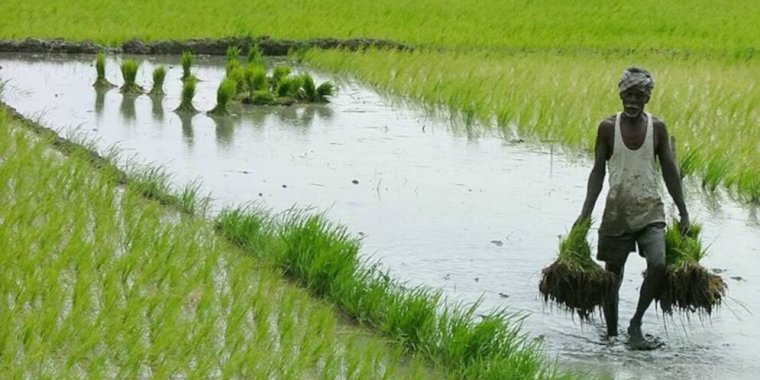| News / Science News |
‘Cut emission of nitrogen oxides to raise crop yields’
Reducing nitrogen oxides emitted by vehicles and industries could significantly improve crop yields in major agricultural countries like China and India, according to a new analysis based on satellite imagery.

Cutting NOx emissions can increase rice, wheat and maize yield, according to researchers. Photo: Meera'rah
Nitrogen oxides, or NOx, are known to directly attack plant cells. They also help in the formation of the toxic gas ozone that reduces crop yields and in the creation of aerosols in the atmosphere that block sunlight which is vital for photosynthesis.
The analysis says that reducing NOx emissions by half could improve the yields of winter crops in China by about 25 per cent and summer crops by 15 per cent.
In India, the increase in crop productivity could be eight and six per cent for summer and winter crops, respectively.
In the Western European region, the gains from halving NOx emissions were nearly 10 per cent for both winter and summer crops, says the analysis which also found the Americas to be the region with the least exposure to NOx.
Regions found to be most affected were those likely to have NOx driving ozone formation.
The analysis focused on the influence of NOx on the world’s major staples like rice, wheat and maize.
Its findings have major implications for improving agricultural production and evaluating climate change alleviation costs and benefits across the globe, according to Stanford University, US, which led the analysis.
India, a major agricultural producer, could consider the potential benefits to farming of decisions about energy and industry policy that affect local air pollution, says David Lobell, lead author of the study and professor at the Department of Earth System Science, Stanford University.
“Reducing pollution is one near-term strategy that can help almost immediately to support high crop productivity. This could be especially needed in the face of climate change and water scarcity,” Lobell tells.
Lobell said that although NOx gases are invisible to humans it is possible to map them using high-precision cameras on board satellites.
“Since we can also measure crop production from space, this opened up the chance to rapidly improve our knowledge of how these gases affect agriculture in different regions.”
As per the European Environment Agency, NOx generally refers to a mix of nitric oxide (NO), a colourless and odourless gas, and nitrogen dioxide (NO2), a gas that turns reddish-brown gas at higher temperatures and has a pungent odour.
Both NO and NO2 are phytotoxins that can directly damage plant growth and reduce yields.
The study focuses on nitrogen dioxide because it can be measured more precisely than most pollutants and because it is a ‘primary pollutant’ and directly emitted by pollution sources — unlike secondary pollutants that are formed in the atmosphere such as ozone, says Jennifer Burney, study co-author and associate professor of environmental science at the University of California, San Diego, US.
“The main point is that actions that address air pollution and improve air quality would also be expected to benefit food security by raising crop yields,” Burney explains.
In general, the estimated sensitivities to nitrogen dioxide are higher in summer than in winter. Although there are differences between the two seasons that could explain this pattern, it is likely that the indirect effects via ozone are stronger in the summer because ozone concentrations are typically higher in summer, the researchers said.
“This study gives an additional justification for policymakers to take action to lower environmental pollution,” commented Samarendu Mohanty, Asia regional director of the International Potato Center.
Mohanty told that the study was particularly relevant for developing countries like India because these countries are required to produce more food for expanding populations on land that is becoming increasingly less arable. (SciDev.Net)
YOU MAY ALSO LIKE





